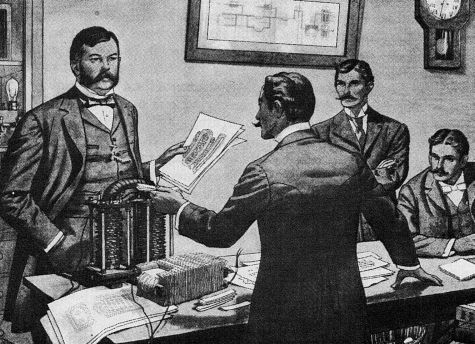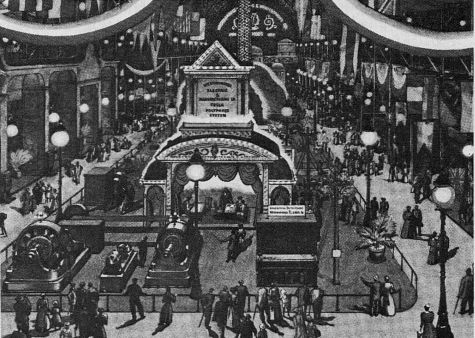George Westinghouse 1846 - 1914
ID: 354809
This article refers to the manufacturer: To the manufacturer
George Westinghouse 1846 - 1914
13.Aug.14 01:10
3054
George Westinghouse
1846 • 1914
Born on October 6, 1846, George Westinghouse received his first patent, October 3, 1865, for a rotary steam engine. His last patent was issued in 1918, four years after his death. Between those two patents were 359 others, many of them revolutionary in principle.
He devised the first effective means of stopping trains - the air brake; he pioneered in the development of railway signals and interlocking switches; he invented a safe and efficient mechanism for joining railway cars; he brought out the first main line electric locomotive and was a pace-maker in railway electrification.
When the nation's industries needed power, he developed a system for transmitting and using natural gas, and topped this with perhaps his greatest contribution of all - today's alternating current system of generating, transmitting, and utilizing electricity for power and light.
In September, 1865, George Westinghouse, registered as a sophomore at Union College. Within three months, however, he had convinced himself and his teachers that the usual college curriculum had little to offer one of his mechanical leanings. When Christmas vacation came, he left college once and for all.
By 1886 he had made the first step towards revolutionizing the area of manufacturing the greatest of all power sources - electricity, for what today we take for granted. On May 23, 1892, George Westinghouse was awarded a contract to light, with, alternating current electricity, the Columbian Exposition, a gala World's Fair to be held in Chicago the following year. The bidding process was based on a per bulb price. Westinghouse's bid was for $ 5.25 / bulb and his competitors came in at between $ 13.98 and $ 18.51 / bulb. In less than a year, George Westinghouse had built a quarter of a million stopper lamps to light up the Fair and to provide ample replacements. The lighting and display were proof to the public that the "Westinghouse’s alternating current" was not the demon they had been led to believe.
The other crowning achievement in his career, already immeasurably rich in its contribution to the rise of industrial America, came in 1905 when Westinghouse introduced the first alternating-current locomotive.
After weeks of illness, complicated by heart disease, with his mind still active, George Westinghouse busied himself working out designs for a wheelchair to be operated by electricity. On the morning of March 12, 1914, he died while resting in his wheelchair, his drawings near him.
*************************************
During the 1980's and 1990's, Westinghouse Electric Corporation, Pittsburgh, PA, sold all its industrial assets to numerous companies and focused on its media business. In 1997, Westinghouse Electric Corporation, was renamed CBS Corporation (a media company). The new, Westinghouse Electric Corporation, New Castle DE, is a subsidiary of CBS Corporation and licensor of the Westinghouse name and trademark.
*************************************






.

.

.

.

.

.



.

.

.

.

.

.


.

.

.



.

.

.



.

.

.



.

.



.

.

.



.

.

.



.

.



.

.

.


.
***************************
Copyright permission to post this pamphlet on the Radiomuseum granted July 14, 2014. Bruce Morgenstern
To thank the Author because you find the post helpful or well done.